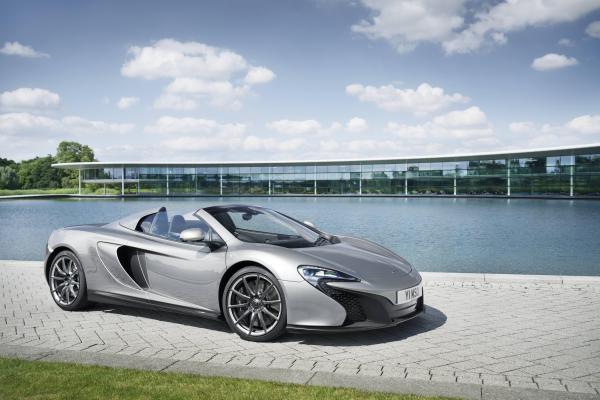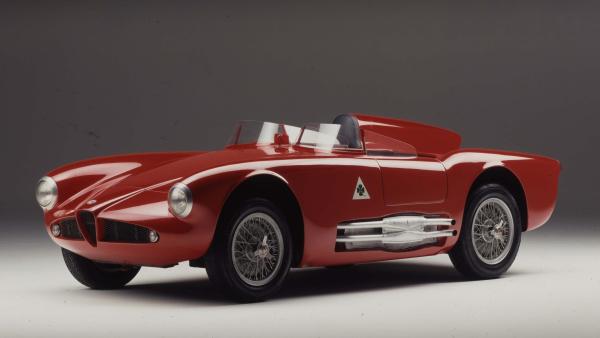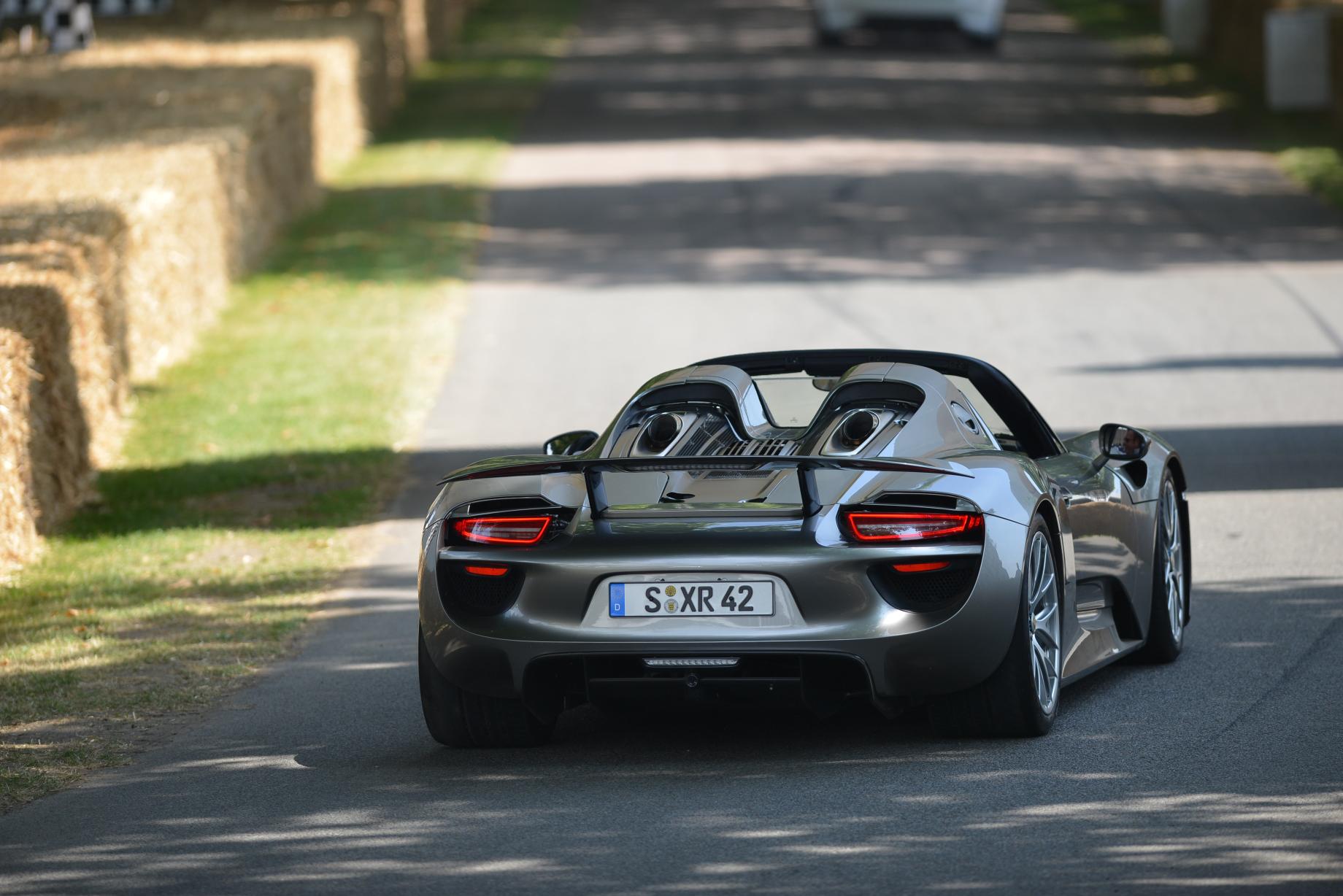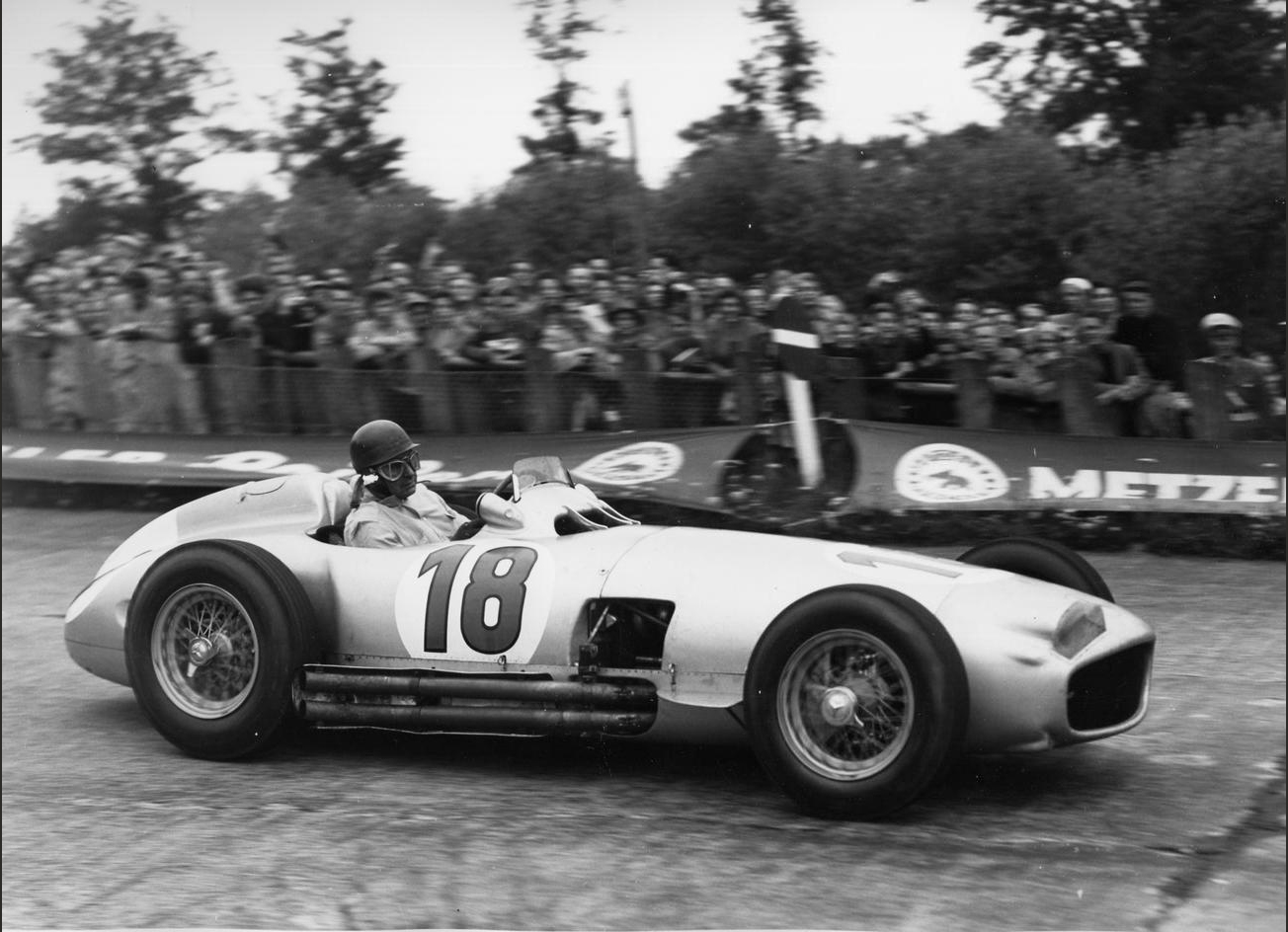
The Porsche 918 Spyder super sports car made its public dynamic debut at the Goodwood Festival of Speed, in a demonstration run up the famous Hill that provided a fascinating insight to the performance potential of its innovative hybrid drivetrain.
The 918 Spyder embodies the essence of the Porsche idea: it combines pedigree motor racing technology with excellent everyday versatility, and maximum performance with minimum consumption. The task faced by the development team was to create the super sports car for the next decade with a highly efficient and powerful hybrid drive.
Developing the car from scratch with a clean sheet of paper allowed Porsche engineers to come up with a no-compromise concept. The entire car was designed around the hybrid drive. The 918 Spyder therefore demonstrates the potential of the hybrid drive to a degree never before seen: the parallel improvement of both efficiency and performance without one being at the cost of the other. This is the idea that has made the Porsche 911 the most successful sports car in the world for 50 years. In short, the 918 Spyder will act as the gene pool for the Porsche sports cars of the future.
The 918 Spyder reveals its close links to motorsport in a variety of ways. It has been designed, developed and produced by Porsche engineers who build race cars, in co-operation with series production specialists. A great deal of insight gained from the development of Porsche race cars for the Le Mans 24 hours in 2014 is thus integrated into the 918 Spyder – and vice versa. The structural concept of the 918 Spyder with a rolling chassis as its basis – a basic vehicle that can be driven even without a body – is race car tradition at Porsche. The concept of the V8 engine originates from the LMP2 RS Spyder race car. The load-bearing structures, the monocoque and subframe, are made of carbon fibre reinforced polymer (CFRP). Porsche has many years of experience with this high strength, lightweight construction material and has again achieved top results with the development of the series production 918 Spyder. Many parts of the super sports car come from manufacturers who have a proven record as suppliers for motorsport vehicles.
Hybrid drive brings advantages in terms of driving dynamics
A key message of the 918 Spyder is that the hybrid drive from Porsche is a plus for no-compromise driving dynamics. Drivers can experience this thanks to the unique all-wheel drive concept with a combination of combustion engine and electric motor on the rear axle and the second electric motor on the front axle.
It is based on knowledge gained by Porsche racing the successful 911 GT3 R Hybrid. Due to the additional, individually controllable front drive, new driving strategies for extremely high, safe cornering speeds can be implemented. Furthermore, the advanced ‘boost’ strategy manages the energy of the electric drive so intelligently that for every sprint with maximum acceleration, the full power of the 918 Spyder can be tapped into simply by fully pressing the accelerator down. In short, the 918 Spyder allows all drivers to experience the potential of advanced longitudinal and transverse dynamics.
The Porsche 918 Spyder also has the potential to break many records. The current lap time for the Nürburgring-Nordschleife is 7:14 minutes. This time was achieved in the presence of international journalists during test drives in September 2012 – more than a year before start of production. The 918 Spyder prototype was therefore approximately 20 seconds quicker than the Porsche Carrera GT. More test drives on the Nürburgring will follow.
An even more important factor is that the 918 Spyder surpasses previous models and competitors by far in its efficiency as well. As a plug-in hybrid vehicle, it systematically combines the dynamic performance of a racing machine with over 880 hp and low NEDC fuel consumption, which at about three litres fuel per 100 km is better than that of most small cars today. To sum it up, maximum driving fun with minimal fuel consumption.
Carbon monocoque guarantees lightweight design with a low centre of gravity
The 918 Spyder utilises the best state-of-the-art technologies, taken straight from motor racing, to achieve its top performance. The entire load-bearing structure is made of carbon fibre reinforced polymer for extreme torsional rigidity. Additional crash elements at the front and rear absorb and reduce the energy in a collision. The unladen weight of approximately 1,640 kg (with ‘Weissach’ package), an excellent low weight for a hybrid vehicle of this performance class, is largely attributable to this concept. The drivetrain components, and all components weighing over 50 kg, are located as low and as centrally as possible within the vehicle. This results in a slightly rear-biased axle load distribution of 57 per cent on the rear and 43 per cent on the front, combined with an extremely low centre of gravity at approximately the height of the wheel hubs: ideal for driving dynamics. The central and low position of the traction battery directly behind the driver not only supports efforts to concentrate masses and lower the centre of gravity, it also provides the best temperature conditions for optimum battery power capacity.
Chassis with race car genes and rear-axle steering
The multi-link chassis of the Porsche 918 Spyder is inspired by motorsport design, complemented by additional systems such as the Porsche Active Suspension Management (PASM) adaptive shock absorber system and rear-axle steering. This incorporates an electro-mechanical adjustment system at each rear wheel. The adjustment is speed-sensitive and executes steering angles of up to three degrees in each direction. The rear axle can therefore be steered in the same direction as the front wheels or in opposition to them. At low speeds, the system steers the rear wheels in a direction opposite to that of the front wheels. This makes cornering even more direct, faster and more precise, and it reduces the turning circle. At higher speeds, the system steers the rear wheels in the same direction as the front wheels. This significantly improves the stability of the rear end when changing lanes quickly. The result is very secure and stable handling.
Porsche Active Aerodynamic (PAA) for different driving modes
Porsche Active Aerodynamic (PAA), a system of adjustable aerodynamic elements, ensures unique and variable aerodynamics. Its layout is automatically varied over three modes ranging from optimal efficiency to maximum downforce and is tuned to the operating modes of the hybrid drive system.
In ‘Race’ mode, the retractable rear wing is set to a steep angle to generate high downforce at the rear axle. The spoiler positioned between the two wing supports near the trailing edge of the airflow also extends. In addition, two adjustable air flaps are opened in the underfloor in front of the front axle, and they direct a portion of the air into the diffuser channels of the underbody structure. This also produces a ‘ground effect’ at the front axle.
In ‘Sport’ mode, the aerodynamic control system reduces the attack angle of the rear wing, which enables a higher top speed. The spoiler remains extended. The aerodynamic flaps in the underfloor area close, which also reduces aerodynamic drag and increases attainable vehicle speeds.
In ‘E-Power’ mode, the control is configured entirely for low aerodynamic drag; the rear wing and spoiler are retracted and the underfloor flaps are closed. Adjustable air inlets under the main headlights complete the adaptive aerodynamic system.
When the vehicle is stationary or in ‘Race’ and ‘Sport’ mode, they are opened for maximum cooling air intake. In ‘E-Power’ and ‘Hybrid’ modes, they close immediately after the car is driven off in order to keep aerodynamic drag to a minimum. They are not opened until the car reaches speeds of approximately 130 km/h or when cooling requirements are higher.
From comfortable to race-ready: five modes for three motors
The core of the 918 Spyder concept is its distribution of propulsive power among the three power units, and their co-operation is controlled by an intelligent management system. To best exploit these different approaches, Porsche engineers defined five operating modes that can be activated via a ‘map switch’ on the steering wheel, just like a race car. On the basis of this pre-selection, the 918 Spyder applies the most suitable operating and boost strategy without driver intervention, thus allowing the driver to concentrate fully on the road.
Quiet and elegant: ‘E-Power’
When the vehicle is started up, ‘E-Power’ is the default operating mode as long as the battery is sufficiently charged. In ideal conditions, the 918 Spyder can cover over 18 miles (30 km) on purely electric power. Even in pure electric mode, the 918 Spyder accelerates from 0 – 62 mph in less than seven seconds and can reach speeds of up to 93 mph. In this mode, the combustion engine is only used when needed. If the battery’s charge state drops below a set minimum value, the vehicle automatically switches to hybrid mode.
Efficient and comfortable: ‘Hybrid’
In ‘Hybrid’ mode, the electric motors and combustion engine work alternately with a focus on maximum efficiency and minimum fuel consumption. The use of individual drive components is modified as a function of the current driving situation and the desired performance. The Hybrid mode is typically used for a fuel economy-oriented driving style.
Sporty and dynamic: ‘Sport Hybrid’
In more dynamic situations, the 918 Spyder selects the “Sport Hybrid” mode for its power sources. The combustion engine now operates continuously and provides the main propulsive force. In addition, the electric motors provide support in the form of electric boosting or when the operating point of the combustion engine can be optimised for greater efficiency. The focus of this mode is on performance and a sporty driving style at top speed.
For fast laps: ‘Race Hybrid’
‘Race Hybrid’ is the mode for maximum performance and an especially sporty driving style. The combustion engine is chiefly used under high load, and charges the battery when the driver is not utilising its maximum output. Again, the electric motors provide additional support in the form of boosting. Furthermore, the gear-shifting programme of the PDK is set up for even sportier driving. The electric motors are used up to the maximum power output limit to deliver the best possible performance for the race track. In this mode, the battery charge state is not kept constant, but instead fluctuates over the entire charge range. In contrast to ‘Sport Hybrid’ mode, the electric motors run at their maximum power output limit for a short time for better boosting. This increased output is balanced by the combustion engine charging the battery more intensively. Electric power is thus available even with several very fast laps.
For pole position: ‘Hot Lap’
The ‘Hot Lap’ button in the middle of the map switch releases the final reserves of the 918 Spyder and can only be activated in ‘Race Hybrid’ mode. Similar to a qualification mode, this pushes the traction battery to its maximum power output limits for a few fast laps. This mode uses all of the available energy in the battery.
Main propulsion: the race car’s eight cylinder engine
The main source of propulsion is the 4.6-litre, eight cylinder engine that produces 612 hp of power. The engine is derived directly from the power unit of the successful RS Spyder, which explains why it can deliver engine speeds of up to 9,150 rpm. Like the race engine of the RS Spyder, the 918 Spyder power unit features dry-sump lubrication with a separate oil tank and oil extraction. To save weight, components such as the oil tank, the air filter box integrated into the subframe and the air induction are made of carbon fibre reinforced polymer. Further extensive lightweight design measures have resulted in such features as titanium connecting rods, thin-wall low-pressure casting on the crank case and the cylinder heads, a high-strength lightweight steel crankshaft with 180 degrees crankpin offset and the extremely thin-walled alloy steel/nickel exhaust system.
Striking features of the V8 are that it no longer supports any auxiliary systems, there are no external belt drives and the engine is therefore particularly compact. Weight and performance optimisations achieve a power output per litre of approx. 132 hp/l – the highest power output per litre of a Porsche naturally aspirated engine – which is significantly higher than that of the Carrera GT (106 hp/l) and outstanding for a naturally aspirated engine.
Unique race car design heritage: top pipes
It isn’t just this engine’s performance, but also the sound it makes that stokes the emotional appeal of the 918 Spyder. This is attributable first and foremost to the so-called exhaust ‘top pipes’: the tailpipes terminate in the upper part of the rear end immediately above the engine. No other production vehicle uses this solution.
The greatest benefit of the top pipes is optimal heat removal, because the hot exhaust gases are released via the shortest possible route, and exhaust gas back pressure remains low. This design requires a new thermodynamic air channelling concept. With the HSI engine, the hot side is located inside the cylinder V, the intake channels are on the outside. There is another benefit as well: the engine compartment remains cooler. This is especially beneficial to the lithium-ion traction battery, as it provides optimum performance at temperatures between 20 and 40 degrees Celsius. Consequently, less energy needs to be used for active cooling of the battery.
In parallel in the drivetrain: hybrid module
The V8 engine is coupled to the hybrid module, since the 918 Spyder is designed as a parallel hybrid: exactly like the current hybrid production models from Porsche. Essentially, the hybrid module comprises a 115 kW electric motor and a decoupler that serves as the connection with the combustion engine. Because of its parallel hybrid configuration, the 918 Spyder can be powered at the rear axle either individually by the combustion engine or electric motor, or via both drives combined. As is typical for a Porsche super sports car, the power pack in the 918 Spyder has been placed in front of the rear axle, and does not have any direct mechanical connection to the front axle.
Upside-down for a low centre of gravity: Porsche Doppelkupplung (PDK)
A seven-speed Porsche Doppelkupplung (PDK) transmission handles power delivery to the rear axle. The high-performance transmission is the sportiest version of the successful PDK gearbox. It has undergone a complete redesign for the 918 Spyder and has been further optimised for high performance. To ensure a low mounting position for a low centre of gravity of the entire vehicle, the gearbox was turned upside down by rotating it 180 degrees about its longitudinal axis, in contrast to other Porsche road cars. If no power is required on the rear axle, the two motors can be de-coupled by opening the decoupler and PDK clutches. This is the action behind the Porsche hybrid drive’s typical ‘coasting’ feature, with the combustion engine switched off.
Independent all-wheel drive: front axle with electric motor
On the front axle, there is another independent electric motor with an output of approximately 95 kW. The front electric drive unit drives the wheels at a fixed ratio. A decoupler de-couples the electric motor at high speeds to prevent the motor from over-revving. Drive torque is independently controlled for each axle. This makes for very responsive all-wheel drive functionality that offers great potential in terms of traction and driving dynamics.
Lithium-ion battery with plug-in charging system
The electric energy for the electric motors is stored by a liquid-cooled lithium-ion battery comprising 312 individual cells with an energy content of about seven kilowatt hours. The battery of the 918 Spyder has a performance-oriented design in terms of both power charging and output, so that it can fulfil the performance requirements of the electric motor. The power capacity and the operating life of the lithium-ion traction battery depend on several factors, including thermal conditions. That is why the battery of the 918 Spyder is liquid-cooled by a dedicated cooling circuit. The global warranty period for the traction battery is seven years.
To supply it with energy, Porsche developed a new system with a plug-in vehicle charge port and improved recuperation potential. This vehicle charge port in the B-column on the front passenger side lets users connect the storage battery to a mains supply at home and charge it. The charge port is standardised for the country of purchase. The on-board charger is located close to the traction battery. It converts the alternating current of the mains supply into direct current with a maximum charge output of 3.6 kW.
Using the supplied Porsche Universal Charger (AC), the traction battery can be charged within four hours from a ten ampere rated, fused power socket on the German 230 Volt mains supply, for example. Furthermore, the Porsche Universal Charger (AC) can be installed at home in the garage using the Charging Dock. It enables rapid and convenient charging within approximately two hours, irrespective of regional conditions. The Porsche Speed Charging Station (DC) is available as an optional extra. It can fully charge the high-voltage battery of the 918 Spyder in just 25 minutes.
Pioneering control concept: clear organisation of the cockpit
The driver is the focus of all technology in the Porsche 918 Spyder. A cockpit has been created for the driver that is typical of the brand and pioneering in its clarity. It is partitioned into two basic areas. First, there are the controls that are important for driving, which are grouped around the multi-function steering wheel, combined with driver information displayed on three large round instruments. Second, there is the infotainment block that is housed in the lifted centre console, which was introduced in the Carrera GT. Control functions, such as those for the automatic climate control system, wing adjustment, lighting and Porsche Communication Management (PCM), including a Burmester high-end sound system, can be intuitively operated by multi-touch with a new type of black panel technology.
For even higher performance: the ‘Weissach’ package
For very performance-oriented customers of the 918 Spyder, Porsche offers the ‘Weissach’ package. These modified super sports cars can be recognised at first glance by special colours and designs inspired by those of legendary Porsche race cars. The roof, rear wings, rear-view mirrors and frames of the windscreen are made of visible carbon. Parts of the interior are upholstered with Alcantara instead of leather, and visible carbon replaces much of the aluminium. Sound insulation has been reduced. The emphasis on performance is not just visual: very lightweight magnesium wheels reduce unsprung masses, and the cumulative result is that gross weight was reduced by about 35 kg. The benefits are experienced in further improved dynamic performance. Other references from motorsport are six-point seatbelts for driver and passenger, optional film-coating instead of body paint, as well as additional aerodynamic body parts in visible carbon.
Porsche redefined: a new super sports car for a new decade
The 918 Spyder continues a long tradition of super sports cars at Porsche; as technology platforms, as the driving force behind both car emotion and car evolution and as the ultimate sports cars of their decades: the 904 Carrera GTS, the Porsche 930 Turbo, the 959, the 911 GT1, the Carrera GT. More than any of its predecessors, the 918 Spyder is providing key impetus for developing technologies for future vehicle concepts. It offers a complete package of components that reflect Porsche DNA – more concentrated than ever before.
Specifications of the Porsche 918 Spyder
Body: Two-seat Spyder; carbon fibre reinforced plastics (CFRP) monocoque interlocked with CFRP unit carrier; two-piece Targa roof; fixed roll-over protection system
Drivetrain: Parallel full hybrid; 4.6-litre V8 mid-engine with dry-sump lubrication; hybrid module with electric motor and decoupler; electric motor with decoupler and gear unit on front axle; auto start/stop function; electrical system recuperation; four cooling circuits for motors, transmission and battery; thermal management
Engine power: 608 hp (447 kW) at 8,600/min (V8 engine)
115 kW (hybrid module on rear axle)
95 kW (electric motor on front axle)
887 hp (combined)
Max. torque: 530 Nm at 6.600/min (V8 engine)
1,275 Nm (crankshaft equivalent combined, 7th gear)
1,086 Nm (combined, 3rd gear)
> 800 Nm (800/min – 5.000/min)
Maximum Revs: 9,150 rpm
Power output per l: 132 hp/l (V8 engine)
Power transmission: Combustion engine with hybrid module and transmission bolted together to form a single drive unit; seven-speed Doppelkupplungsgetriebe (PDK); rear-wheel drive; front electric motor with gearbox for driving the front wheels (decoupled from 235 km/h); five pre-selectable operating modes for optimum coordination of all drive units
Gear ratios PDK
1st gear 3.91
2nd gear 2.29
3rd gear 1.58
4th gear 1.19
5th gear 0.97
6th gear 0.83
7th gear 0.67
R gear 3.55
Final drive ratio 3.09
Clutch diameter 220 mm / 164 mm
Chassis and Suspension: Double-wishbone front axle; optional electro-pneumatic lift system on front axle; electro-mechanical power steering; multilink rear axle with adaptive electro-mechanical system for individual rear wheel steering; electronically controlled twintube gas-pressure dampers in the front and rear with Porsche Active Suspension Management (PASM)
Brake system: High-performance hybrid brake system with adaptive recuperation; internally ventilated and perforated front ceramic brake discs (PCCB), 410 mm in diameter and 36 mm thick; rear discs 390 mm in diameter and 32 mm thick
Wheels and tyres: 918 Spyder wheels (Weissach package: 918 Spyder magnesium wheels)
front 9.5 J x 20 with 265/35 ZR 20
rear 12.5 J x 21 with 325/30 ZR 21
Weights:
Kerb weight, DIN 1,640 kg (‘Weissach’ package)
Dimensions:
Length 4,643 mm
Width 1,940 mm
Height 1,167 mm
Wheelbase 2,730 mm
Track width front 1,664 mm, rear 1,612 mm
Luggage compartment capacity, VDA ~ 110 litres
Fuel tank capacity 70 litres
Energy supply: Lithiumion battery with 6.8 kWh capacity (BOL nominal), 220 kW maximum power and mains-compatible plug-in charger.
Performance:
Top speed > 340 km/h (211 mph)
purely electric 150 km/h (93 mph)
Acceleration:
0 – 62 mph 2.8 s
0 – 124 mph 7.9 s
0 – 186 mph 23.0 s
Consumption (NEDC): Total ~ 3.3l/ 100km (85.6 mpg)
CO2 emissions: Total ~ 79 g/km
Range: Purely electric approx. 30 km (18 miles)
Warranty: Vehicle 4 years, Battery 7 years






